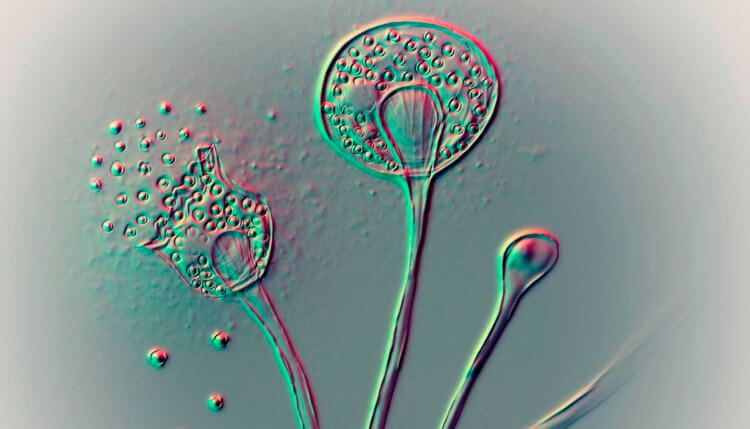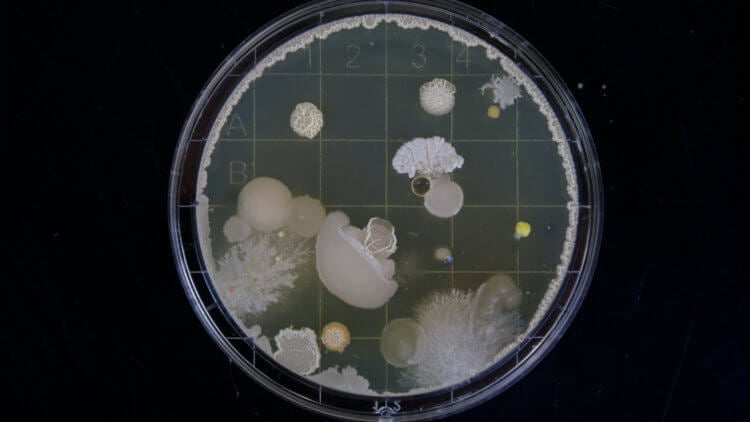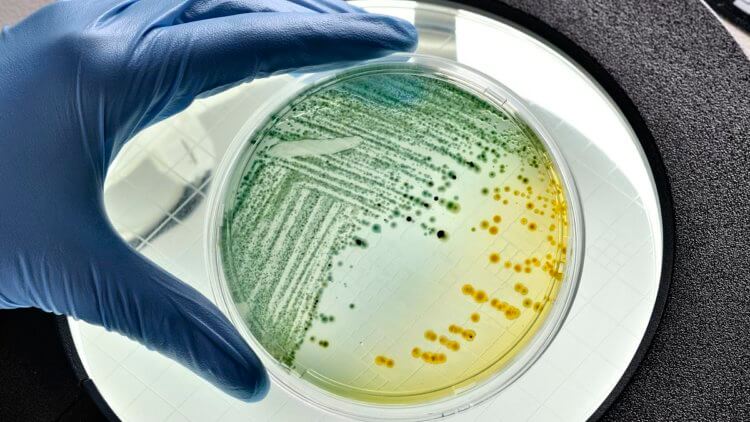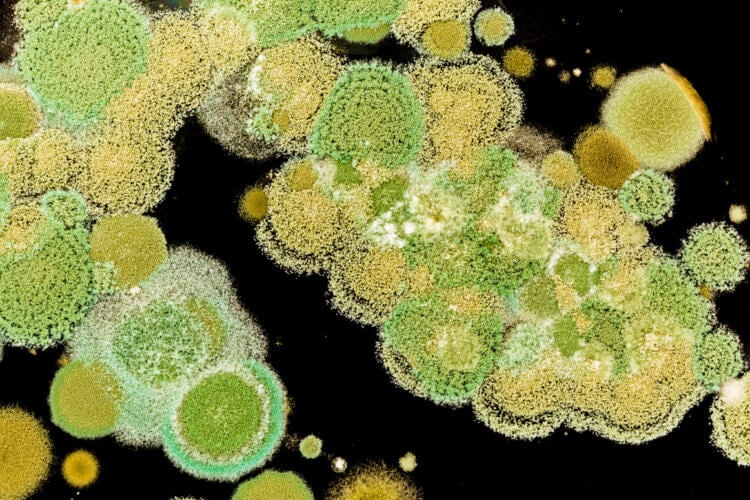As the planet's average temperature rises and the number of abnormally hot days increases, some species of animals and plants are adapting to the changing environment. Recently, in a paper published in The Lancet Microbe, researchers reported fungi's greatest success in adapting to warmer climates. But not just mushrooms – we are talking about pathogenic representatives of this kingdom. The article states that pathogenic fungal species show signs of increased activity and virulence. However, most fungi have low heat resistance, which means they cannot survive at the body temperature of mammals. But new species, such as Candida auris, on the contrary, are resistant to high temperatures and adapt to human body temperature. The data obtained during the analysis indicate that the number of mycoses – fungal diseases – in the world will constantly increase.

The impact of climate change and natural disasters on fungal infections. Image: www.futurity.org
Pathogenic fungi are widespread in the environment – they are present on plants, clothing, household items, and in the soil. Diseases caused by pathogenic fungi are calledmycoses.
Climate change and pathogenic fungi
In a major review of the impact of climate change and natural disasters on fungal pathogens and the risk of mycoses, researchers looked at the adaptation of fungi to rising temperatures on Earth and concluded that fungi become tolerant to rising temperatures and become more virulent.
Climate change is creating conditions conducive to the emergence of new fungal pathogens and encouraging fungi to adapt to previously inhospitable environments, such as polluted habitats and urban areas, leading to the geographic spread of some fungi into traditionally non-endemic areas, the review authors write.
Climate change is also increasing the frequency and severity of natural disasters, which can trigger fungal disease outbreaks and increase the spread of pathogens. Moreover, it is becoming increasingly clear that rising global temperatures are having a significant impact on the emergence and resurgence of other infectious diseases.

Pathogenic fungi are fungi that cause disease in humans or other organisms. Image: www.isaaa.org
To recap, climate change refers to long-term changes in temperature and weather patterns that disrupt ecological systems around the world, leading to changes in the global distribution of pathogens, hosts, and disease reservoirs.
This is interesting: What lies behind the curse pharaohs?
This also applies to mycoses– infectious diseases caused by parasitic fungi. Thus, rising temperatures have already contributed to the spread of endemic fungal diseases such as coccidioidomycosis and histoplasmosis.
Mycoses are a global threat
Before you become completely afraid of the spread of pathogenic fungi, we note that infection with fungi such as candida and aspergillus is a deadly threat primarily for people with weakened immune systems. Healthy people, fortunately, rarely have to worry about contracting a fungal infection, and the vast majority of potentially pathogenic fungi do not do well inside the human body. But this, experts warn, may change in the future.
As shown in work recently published in the journal Proceedings of the National Academy of Sciences, at higher ambient temperatures, some types of pathogenic fungi acquire changes in use and regulation of certain genes.

Humanity is unlikely to be ready for a pandemic of fungal diseases, experts believe. Image: i.natgeofe.com
These mobile DNA elements likely contribute to environmental adaptation and greater virulence. This means that infectious fungal diseases could become more common in the future as heat stress increases the number of mutations that occur, says study co-author Asia Gusa of Duke University.
It is important to understand that fungal diseases are not infectious in our usual sense – we do not transmit fungi to each other, but fungal spores are in the air, which means we are constantly releasing them. Fortunately, today our immune system is able to fight them. In addition, fungal spores are larger than viruses, which means that protective masks during the COVID-19 pandemic will be extremely effective.
On the topic: Can mushrooms turn people into zombies? Let's explain using The Last of Us as an example
Researchers note that today the number of fungal diseases is growing mainly due to an increase in the number of people with weakened immune systems or underlying diseases. Also alarming is the fact that pathogenic fungi quickly adapt to climate change and rising temperatures.
Thus, in the course of the work, the authors of the new study found that heat stress in the pathogenic fungi C. deneoformans significantly accelerated mutations – after 800 generations of cultivation in a laboratory environment, the frequency of mutations was five times higher in mushrooms grown at bodies 37 degrees Celsius, compared to mushrooms grown at 30 degrees.

Pathogenic fungi adapt to the temperature of the human body. Image: insideclimatenews.org
Mobilization of transported elements also appeared to be greater in fungi living on mice than in laboratory cultures. The study authors suspect that the additional survival challenges of animals with weakened immune systems may result in mutations occurring more frequently and the virulence of pathogenic fungi becoming stronger. Even more alarming is the increase in resistance of fungal infections to antibiotics.
Do you want to always be aware of the latest news from the world of science and high technology? Subscribe to our channel on Telegram – so you definitely won’t miss anything interesting!
It is also important that the world is experiencing a decrease in the average body temperature of people, which is likely caused by a decrease in the number of chronic infections and inflammatory processes along with an increase in living standards. Thus, climate change may increase the pathogenicity of fungi to humans by matching the temperature preferences of fungi and potential human hosts.
This leads us to an increase in genetic changes, some of which could conceivably lead to increased resistance to heat, while others may have a greater potential for disease. Bacteria and viruses are the cause of deadly global pandemics and bothersome infections. But the pathogens that we have not yet encountered to such an extent are fungi.

Mycoses are gradually acquiring drug resistance. Image: thred.com
We know that many fungal infections can persist and then return with potential genetic changes. And if pathogenic fungi adapt to climate change faster than expected, that’s a problem worth addressing,” says Arturo Casadevall, chair of the Department of Molecular Microbiology and Immunology at Johns Hopkins University.
Ecosystem Changes
Fungal plant pathogens are evolving in response to climate change and, among other things, threaten global food security. Changes in weather patterns continue to disrupt ecological systems and alter the global distribution of disease sources, pathogens, and hosts.
Current models predict that changes in fungal communities will promote the spread of saprotrophic fungi or saprophages—living creatures that obtain nutritional compounds from the remains of dead animals or their waste.

Pathogenic fungi are a real threat. Image: www.trendbullet.in
You may be interested in: In the USA, a dangerous fungus infects the human brain. What do you need to know?
Since pathogenic fungi adapt to some environmental factors, such as increased temperature, they can resist others, such as heavy metals, radioactive isotopes and pH stress. This allows them to spread in acidic environments and contaminated wastelands. Evolutionary pressures exerted by the heat island effect in urban areas appear to favor faster adaptation of fungi.
Polluted water bodies can also harbor fungal infections and threaten health systems. Many fungi, including Aspergillus and some species of Mucormycetes, can degrade plastic and are pathogenic to humans. Thus,the accumulation of microplasticsmay promote fungal growth and resistance to antifungal drugs.

Pathogenic fungi may become stronger as the climate warms. Image: cff2.earth.com
Moreover, previously common fungal diseases such as histoplasmosis and coccidioidomycosis have expanded their geographic presence. The number of plant pathogens is also increasing and poses a serious threat to food security. Despite the increasing use of fungicides in agriculture, there is evidence of cases of resistance to antifungal drugs.
Don't miss: How a fungus zombifies flies and makes them do crazy things
Because the consequences With climate change being felt around the world, mycologists and public health researchers have raised concerns that rising temperatures are facilitating the emergence of new pathogenic fungi and altering the distribution and prevalence of disease. And this, you see, is an alarming sign for all of us.